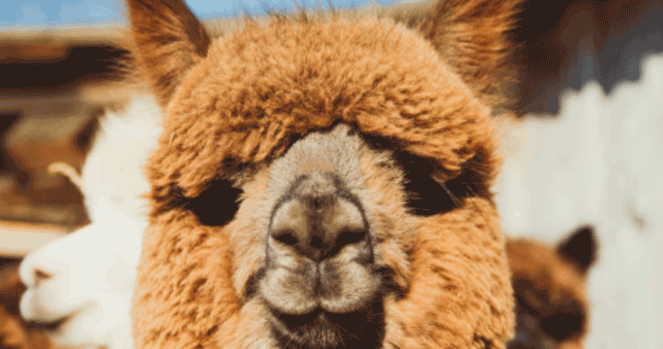Improving Alpaca Fleece Quality Through Nutrition
Warm socks. Cozy scarves. Comfortable sweaters. An alpaca is born with the ability to produce fine, high-quality fiber for soft, warm clothing. But, did you know fiber quality can be managed over time? One way alpaca owners are discovering they can improve fleece quality is through nutrition.
Nutrition is essential for alpaca health and quality fiber production. It’s important whether you’re competing at shows or simply enjoying the company of these fine-fibered friends.
Three alpaca owners share their experiences
In this roundtable discussion, three alpaca owners highlight how they’re working to improve their herd’s fleece quality with nutrition.
Tell us about your alpaca herd.
Dee Stielow: My husband and I have our alpaca farm, Salt Creek Alpacas, centered in Farmer City, Ill. We raise them because we enjoy the science and hands-on challenges of providing the next generation of genetics in a young industry. As a small breeder, we’ve raised our own color champions in every color category, which we are proud of considering we only breed two or three alpacas a season.
Bobby Dickerson: We started out with four suri alpacas on our farm, Rock’n D Alpacas, in Oklahoma City, Ok., a little over seven years ago. For my wife, Diane, and I, they’re like our children so we give them the best possible care. We travel all over the nation showing our alpacas and realize how important nutrition is to their fleece.
Jim Konyn: My wife and I bought 12 suri alpacas about ten years ago and we enjoy improving fiber through the generations. We’re located in northeastern Wisconsin and actively show our suris in fleece shows and spinoffs across the nation.
What do you look for in quality alpaca fleece?

Stielow: We care about the micron diameter, staple length, brightness, architecture, and handle, or softness, of the fiber. As a breeder, I look at both genetics and nutrition when evaluating and predicting fleece quality in offspring.
Dickerson: We're looking for the complete package. Density, micron, luster and the organized lock structure are what they're judging in the show ring. Improving the quality of fleece is important in the fiber industry when producing alpaca garments with a super-soft feel. The ideal animal will have secondary and primary fibers close together, even as they get older.
How does nutrition impact alpaca fleece quality?
Stielow: Whether it’s the hay or supplement quality, what the animal consumes will impact its fleece. Many breeders recognize that overfeeding or providing the wrong feed will blow out or coarsen fiber. Proper nutrition is vital.
Dickerson: What you feed has a lot to do with fleece quality. Poor nutrition can make the fleece appear dull, while high-quality nutrition can make it shine.
Konyn: Nutrition is part of the alpaca’s environment, which must lend itself to producing better fiber. They say, "You can't make a silk purse out of a sow's ear." If you're buying the cheapest nutrition you can find, you won’t get high-quality fleece. You must put quality in to get quality out.
How did you develop a nutrition program to meet your fleece quality goals?
Stielow: We started out like most others new to the industry – doing what our mentors suggested. The more I watched and listened, especially to comments from judges in the show ring, I could see how fleece quality connected to nutrition. To find out how I could do better in the showring, I approached our local Mazuri representative at a show. I appreciated they had research and expertise to back their nutrition.
Dickerson: Dr. Norm Evans, an alpaca nutrition partner with Mazuri, encouraged us to start by testing the orchard hay our program revolves around. We balance the nutrient levels in the hay with Mazuri feeds to fill any gaps. To ensure offspring grow properly and reach full genetic potential, we’ve learned it’s crucial to provide the mothers with quality nutrition to pass on to her cria.
Konyn: We attended a seminar given by Dr. Evans and learned a cria’s fiber follicles develop in utero. It's important for the mothers to have the right nutrition to ensure proper growth and development of those fiber follicles for her baby. We make sure our nutrition program includes high quality nutrition for our mothers to start the next generation off right.
Why do you choose Mazuri for your alpacas?
Stielow: We have tried other feeds but our animals didn’t seem to thrive. I made an investment in the highest quality animals and now I have confidence they have the highest quality nutrition available to them in Mazuri.
Dickerson: I put a lot of research into the various feeds and was impressed with Mazuri. Mazuri takes it to the next level to produce quality feed and has been an excellent choice for us. I don't think we would have had the high-quality fleece on our champion alpacas without it.
Konyn: Given all the research they do to develop their feeds and supplements, I trust we’re getting quality feed with Mazuri. All the nutrients and vitamins are balanced in our nutrition program and we don’t need to do any supplementation. Our alpacas are getting everything they need.
